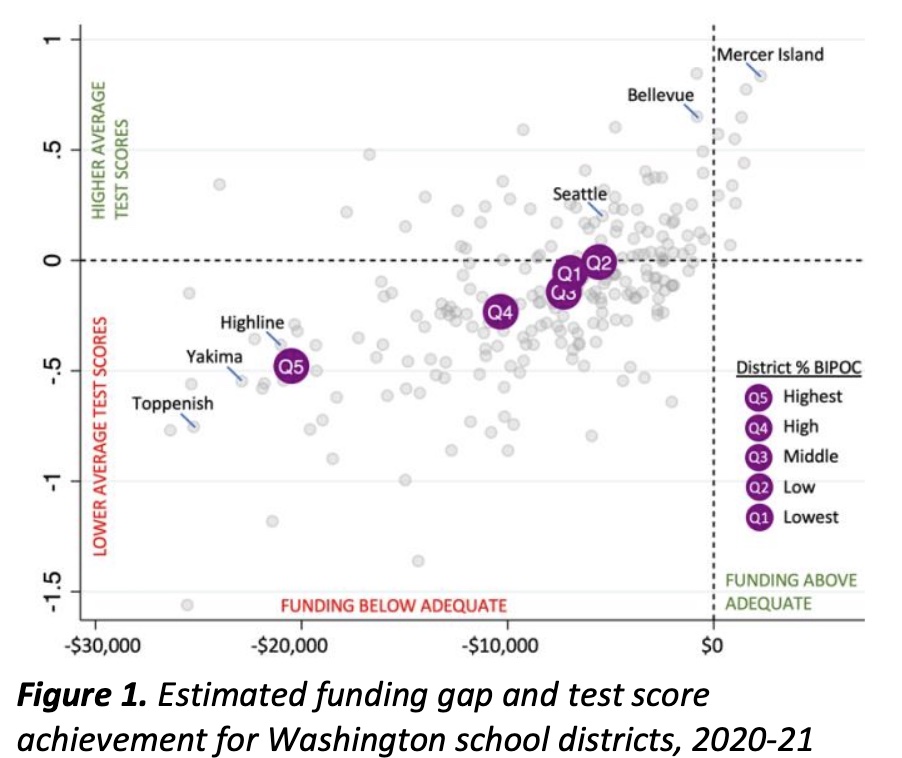From a recently published CTP policy brief:
Over the past four decades, states have reformed their K-12 finance systems to equalize funding across school districts.i In some states, such as California, Minnesota, and Nebraska, districts that serve higher shares of students in poverty receive more state and local revenues per student. In Washington State, despite recent reforms that increased overall funding, students from low-income households disproportionately attend under-resourced school districts relative to middle and upper income students.

Figure 1, adapted from Baker et al. (2022), shows how this funding pattern intersects with student achievement. The figure shows estimates of “funding adequacy” on the x-axis and average test achievement on the y-axis. Each grey dot represents a school district, with several districts labeled. The average funding gap and achievement level for districts that enroll the highest share of students who are Black, Indigenous and other People of Color are labeled in purple circles with Q5, corresponding to the highest quintile (approximately 60 school districts). The circles labeled Q4 to Q1 are the fourth quintile to first quintiles, where Q1 represents districts enrolling the fewest share of students of color. The upward sloping pattern displayed in the figure implies that Washington’s inequitable finance system contributes to disparities in educational outcomes.
Read the entire policy brief here:
Knight, D. S., Baker, B., Srikanth, A., Weber, M., & Fujioka, K. (2023). Creating an adequate and equitable school finance system in Washington State: Recommendations for state policymakers. Seattle, WA: Center for the Study of Teaching and Learning, University of Washington. http://hdl.handle.net/1773/51006